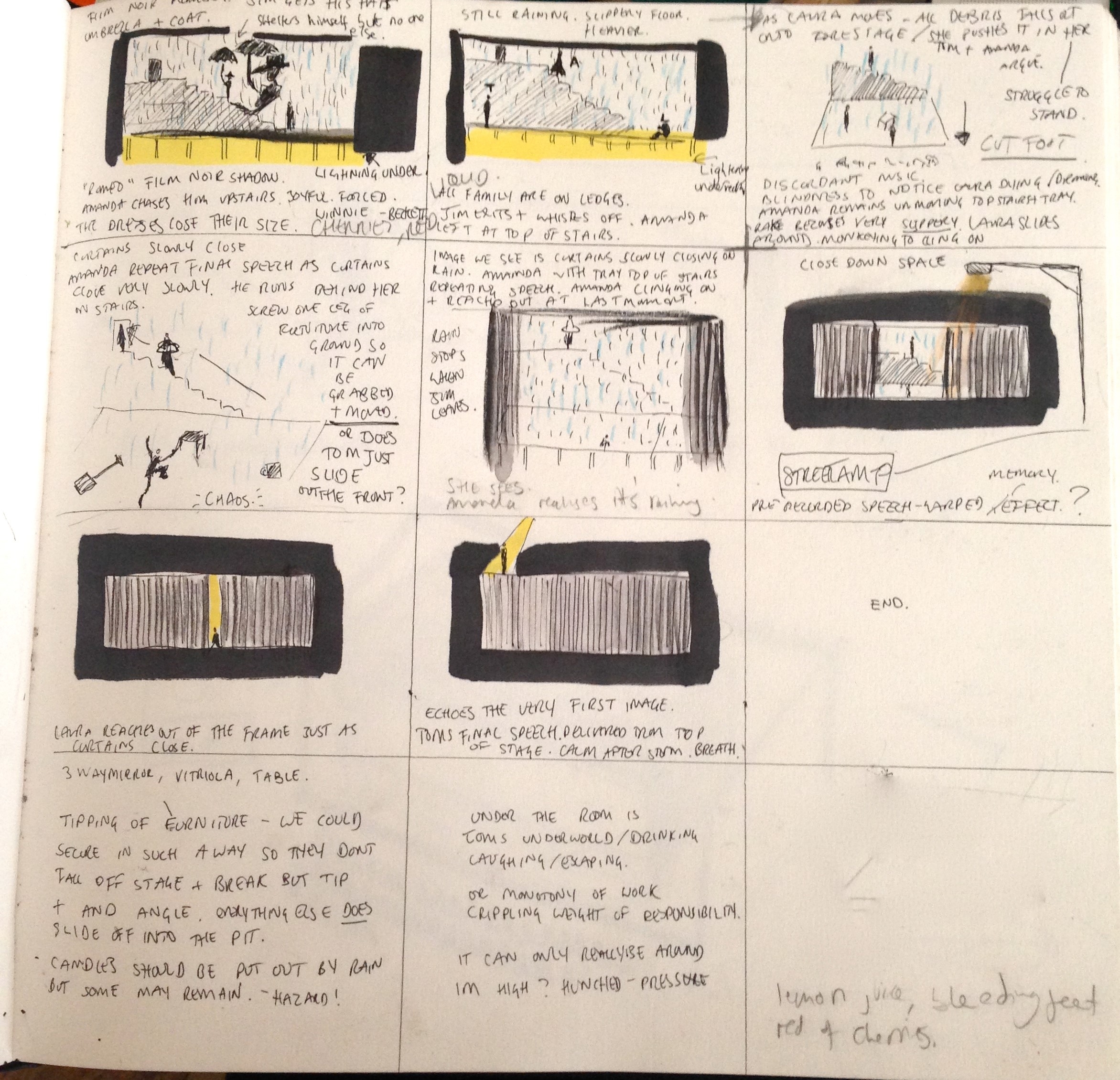Designer Fly Davis on The Glass Menagerie
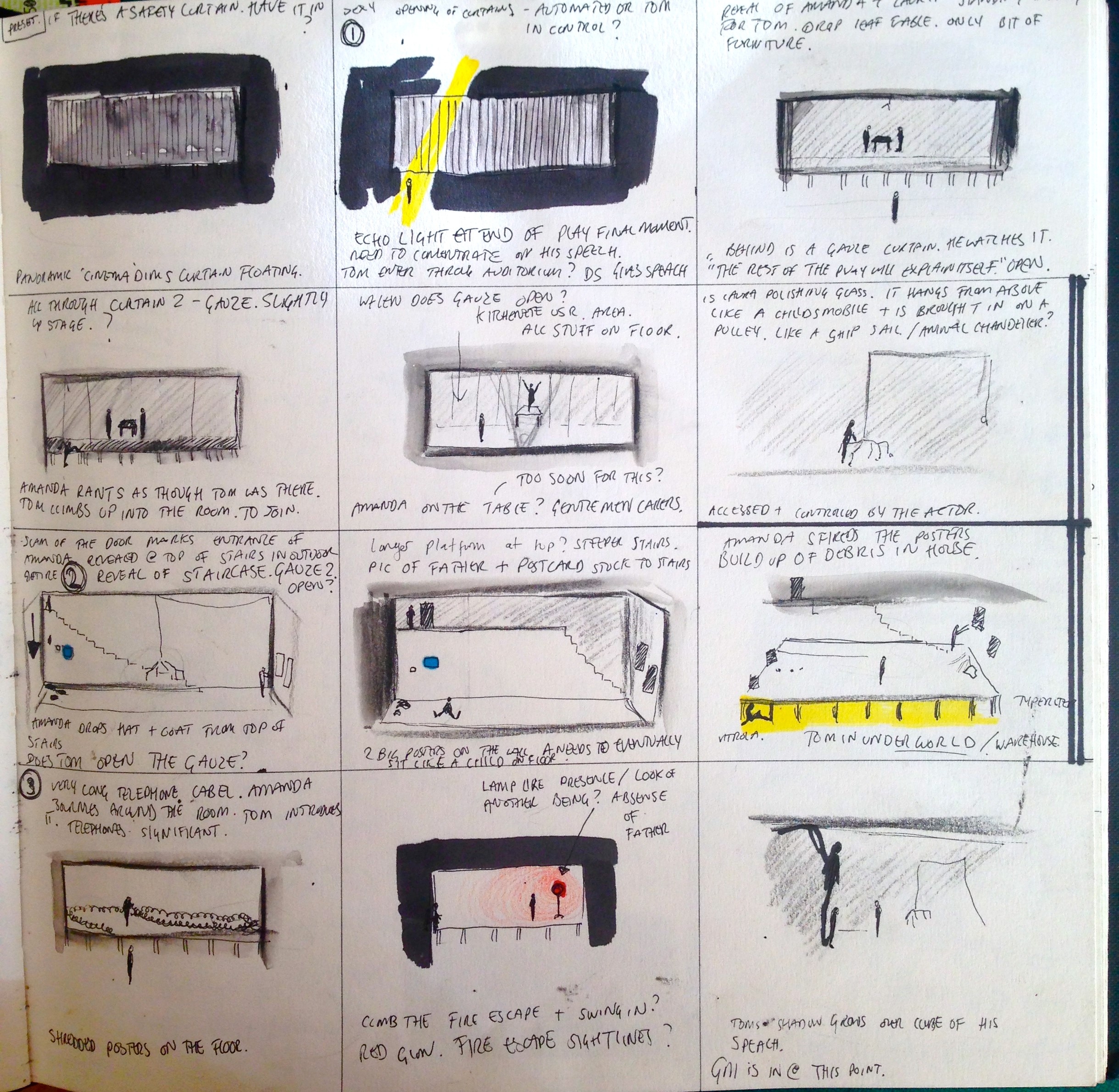
What was the process of achieving the design you have?
Ellen (McDougall - Director) and I read the play aloud to one another in American accents which helped bring the play to life. It sounds like a slightly ridiculous thing to do but it's a great way of really hearing the words. Always preferable to just reading in your head as it’s so easy to miss crucial things. We had a colour code to highlight themes: death, weather, religion, blindness, disability, escapism, cinema, dreams, animalistic tendencies... Then, we looked up lots of references pictures - hundreds and hundreds - based on the themes that spoke to us and distilled them down to what felt strongest. After doing that, I could storyboard moment by moment and figure out how best to house those themes within the set.
"Designer Fly Davis’s tight, stark set perfectly reflects the claustrophobia of the character’s lives."
Runcorn & Widnes World
Storyboarding helps to pinpoint shapes of the playing space as you draw. Once I had drawn a rectangular shape linking into all the cinema references, advertising etc, the storyboard could flow fluidly and I could roughly plot how the space could be used and then add detail as that configuration of space felt right.
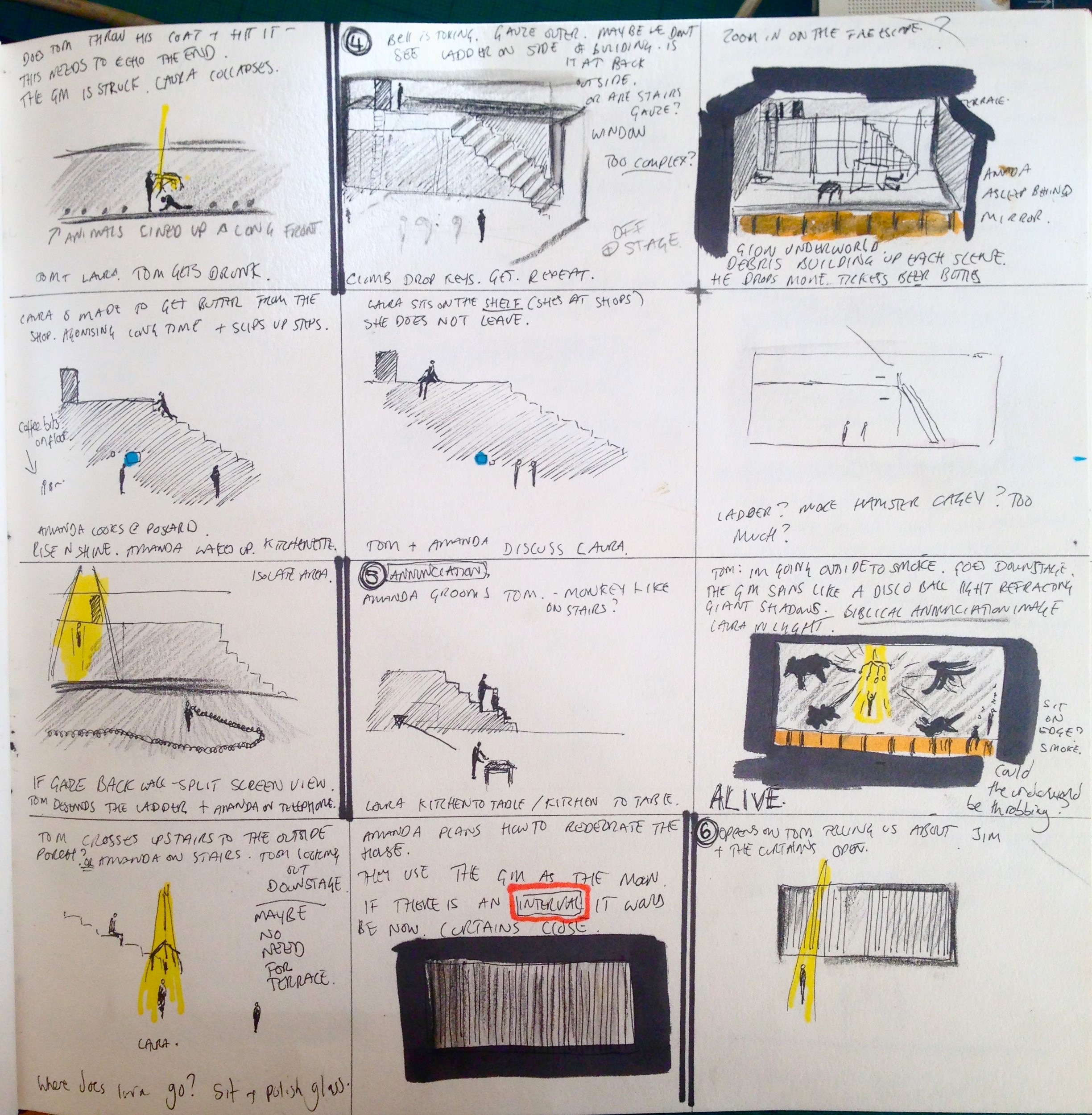
Some things I can never pinpoint how I got to, some decisions you make are instinctive. Once I had a host of endless sketches mapped out, I built a white card model of what I had drawn and made it 3D. That got discussed in a big meeting with the producers and production manager to see if it could be realised within budget and sightlines with the two levels. It couldn't! So Ellen and I cut things like a ceiling and tweaked and tweaked until the final presentation when it was (virtually) signed off. The whole process from drawing to final model and costumes took a couple of months.
"This minimalist approach lends a heightened clarity and simplicity to the play’s strong narrative arc, and compels us to focus on the dialogue, and the marvellous performances."
Merseysider Magazine
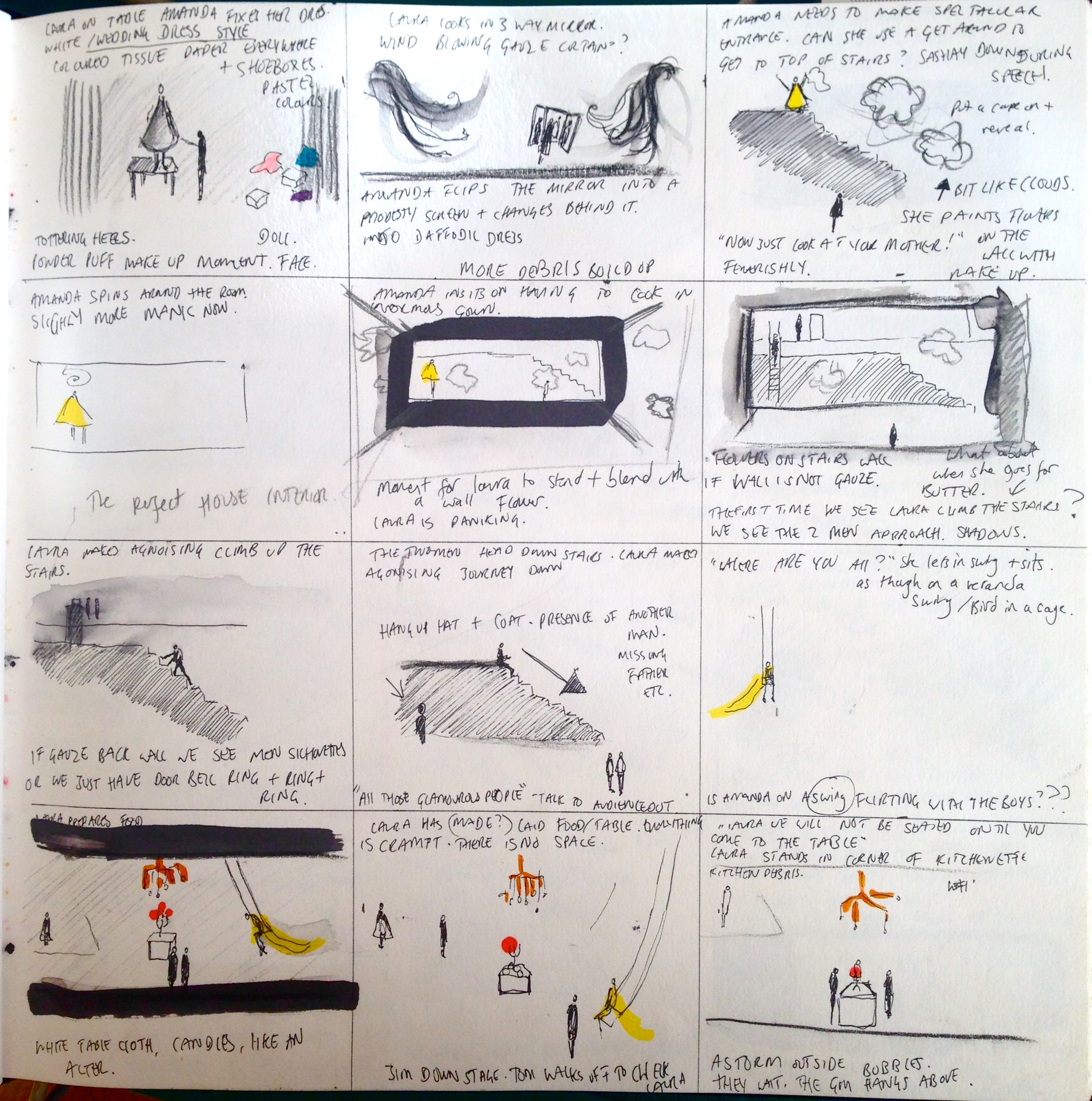
What attracted you to this project?
The chance to work on another Tennessee classic was one of the main attractions. I have been lucky enough to design A Streetcar Named Desire at the Young Vic in their Clare theatre with 16-19 year olds last year and that sparked my love for Tennessee's words. His ability to write about how complex humans are, and families in a very natural and human way is a total joy to unpick and explore as a designer.
Not only that but Ellen is someone whose work I hugely respect and admire, so working with her was a no brainer. As well as working with Headlong - a company who create bold and exciting work.
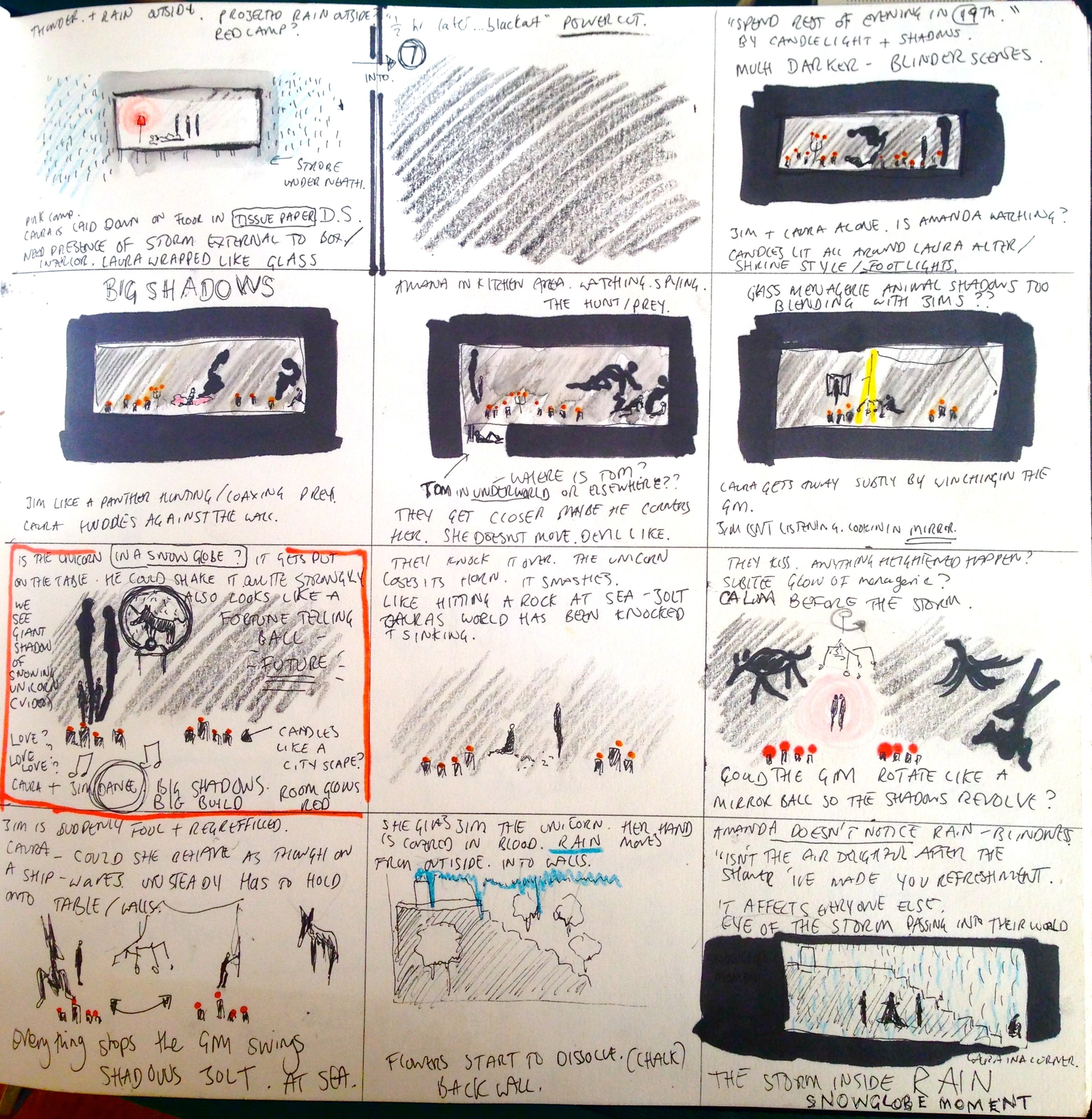
How does your design help to tell the story?
The design should never tell the story of a play! The text and the action should do that. The design should serve the play by supporting the story and giving it an environment to aptly frame it. The intention of The Glass Menagerie design is to simply let the play breathe.
The text is so full and rich, bursting with colour and life that if I had echoed those qualities in the set, the two would sit at odds with one another. By stripping back detail on the set, it lets the emotions and heightened visual moments really sing out. The same is applied to the muted grey palette of the space so that the characters are what we zoom in on.
★★★★
"Every performance is so powerful you notice far more what there is than what there isn’t."
Liverpool ECHO
